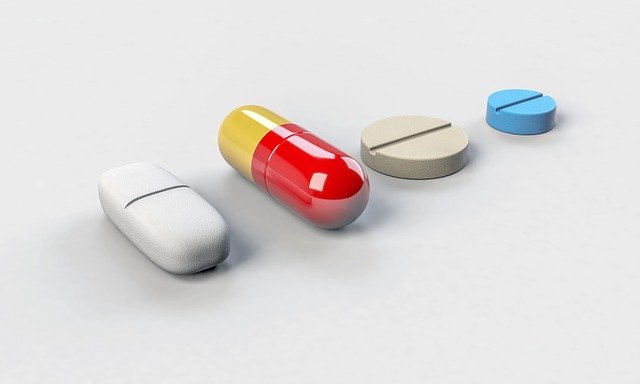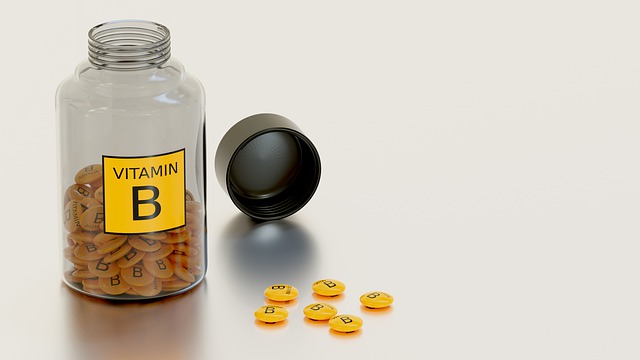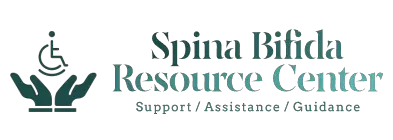Top Drugs & Medications Guide for Treating Spina Bifida (FAQ)
Since there is no cure for spina bifida (SB), it is only logical that one of the treatment modalities used to provide temporary relief of symptoms to those affected by the condition is medication. Interestingly, the majority of the medications used to help with SB were actually not specifically made for the condition. However, research has indicated that they are somewhat effective in relieving associated SB symptoms.
In this article, we will explore the medications used to treat spina bifida, including prescription drugs and over-the-counter meds, such as vitamins; those indicated for adults versus those that are appropriate for children, plus much more.
What Medications are Used to Treat Spina Bifida?

The medications used to treat SB are made primarily for the treatment of neurogenic bladder dysfunction. Some of these medications include:
- Anticholinergics (oxybutynin chloride, hyoscyamine sulfate)
- Tricyclic antidepressants (imipramine hydrochloride; may act through anticholinergic effects)
- Alpha-adrenergic antagonists (terazosin)
Further, the medications used for spina bifida are meant to address its symptoms. For example, antibiotics, such as Amoxicillin, Cotrimoxazole, and Nitrofurantoin are also used to treat kidney and bladder infections. Medications are also used to assist with seizure management, and urination and intestinal function. Analgesics are used to promote pain relief as well [1].
Anticholinergics
In a 2005 study, researchers determined that anticholinergics delivered in doses of 0.2 mg/kg/day proved to be effective and quite safe for the treatment of high-risk urinary problems during infancy for children less than a year old. Additionally, it can help to improve the preservation of kidney function in children with severe dysplasia by reflux [2].
In essence, this class of drug is used to protect kidney functions and upper urinary tract function as well.
Examples of anticholinergics and their doses for children with Spina Bifida
- Oxybutynin (Uropan© 5 mg susp, tab) 0.2-0.4 mg/kg
- Tolterodine (Detrusitol©, Toldin©, Toldex©, 1-2 mg tab, 4 mg long acting tab) 2-4 mg/day 2 doses (0.5-2 mg/day)
- Propiverine (Mictonorm© 15 mg) 0.5-0.8 mg/kg
- Trospium (Spasmex© 15-30 mg tab) 10-25 mg/day 2 doses
- Solifenacin (Kinzy©, Natysin©, Solycin©, Vesicare©, Vesifix©, 5-10 mg tab) 5 mg/day single dose (5-10 years of age)
- Darifenacin (Emselex©, 7.5-15 mg long acting)
- Fesoterodine (Toviaz) 4-8 mg/day [3]
Tricyclic antidepressants
Tricyclic antidepressants are often used as an alternative to anticholinergics for SB bladder dysfunction, as such, they are referred to as an off-label form of medical treatment. Tricyclic antidepressants typically work by increasing norepinephrine and serotonin levels. However, in relation to SB, they are used for their anticholinergic and direct muscle relaxant effects on the urinary bladder [4].
Alpha-adrenergic antagonists
Alpha-adrenergic antagonists are yet another class of medication that is commonly employed in the management of bladder dysfunction for people affected by spina bifida. Alpha-adrenergic antagonists act by reducing bladder outlet resistance, increasing urinary flow rate, and enhancing bladder emptying [5].
In a study that looked at the role of alpha-blockers in the treatment of children with voiding dysfunction, it was determined that selective alpha-blocker therapy may be effective and well-tolerated in children. The children in the study showed vast improvement in bladder emptying and other associated voiding symptoms [6].
What is the Difference Between the Medications for Adults and Children with Spina Bifida?
The difference between the medications for adults and children with spina bifida is primarily dosage.
Oxybutynin is the most common anticholinergic medication used in spina bifida patients and this drug is the only Food and Drug Administration-approved medication for children.
What Medication Prevents Spina Bifida?

Folic acid, also known as folate (Vitamin B) has been shown to help prevent spina bifida development. According to multiple pieces of research, if women take folic acid supplements as a form of pre-pregnancy and prenatal medication, this can significantly reduce the likelihood of having a child affected by spina bifida and other neural tube defects. However, this prevention is not guaranteed [7].
It is recommended that women take a daily vitamin supplement with 400 micrograms of folic acid while planning or trying to conceive and during early pregnancy. Additionally, experts explain that the use of folic acid leading up to pregnancy has been proven more effective in the prevention of SB rather than starting the supplement during pregnancy. This efficacy relating to pre-pregnancy occurs because spinal column formation begins quite early after egg fertilization [7].
Furthermore, in cases where children are born with SB, it has been evidenced that if the mother took folic acid before and during pregnancy, then the severity of the condition tends to be greatly reduced [7].
What Medications are Used for Social or Mental Problems in Children with Spina Bifida?
The medications that are used for social or mental problems in children with spina bifida are primarily for treating depression and anxiety. However, these drugs are often used as the second line of action for children, as the management of these social and mental health challenges typically begins with increased socialization, counseling, skills training, and activities that involve building resilience [8].
Dr. Andrew Zabel, Clinical Director of Neuropsychology from the Johns Hopkins School of Medicine talks about Anxiety and Depression with those with Spina Bifida in this video
Medications are typically used with older children affected by SB and experiencing psychological problems. Some of these medications include:
● Antidepressants
These are primarily used to treat depression but can also aid with managing other health conditions, like insomnia, anxiety, and pain. Medications used to help are:
Fluoxetine
Citalopram
Sertraline
Paroxetine
Escitalopram
Venlafaxine
Duloxetine [8]
● Anti-Anxiety Medications
Anti-anxiety medications help reduce the symptoms of anxiety, such as panic attacks, or extreme fear and worry. Medications used to help are:
Clonazepam
Alprazolam
Lorazepam
Buspirone [8]
● Antipsychotics
Antipsychotics are typically used to manage psychosis, which is a condition that affects the mind by altering how a person perceives reality. Medications used to help are:
Chlorpromazine
Haloperidol
Perphenazine
Fluphenazine [8]
● Mood Stabilizers
Mood stabilizers are normally used in the treatment of bipolar disorder and mood swings. Medications used to help are:
Carbamazepine
Lamotrigine
Oxcarbazepine [8]
Living with spina bifida can be significantly challenging for some children, especially the types that cause malformations and affect their mobility and eventually their independence. Consequently, the impact of SB on their cognitive and psychosocial functioning can be extremely negative and increases the chances of children developing one or more mental health concerns [9].
Some of the more common social and mental health challenges that affect kids with SB include low self-esteem, anxiety, depression, isolation, insomnia, and inadequate coping [9].
Why does Folic Acid Prevent Spina Bifida?
Folic acid helps to prevent SB by ensuring the closure of the neural tube, which is responsible for developing the brain and spinal cord. During cell division, folic acid acts as a chemical compound that is required for an enzyme to react and cause proper tube closure [10].
Video of Robert Bernstein MD Chief of Pediatric Orthopedics Surgery talks about everything you need to know about Folic Acid, Spina Bifida and Pregnancy.
When there is a deficiency in folic acid, an impairment in cellular growth and replication within a fetus or the placenta may occur. This does not always happen but it is highly probable and without the neural tube being closed properly, the exposed neural tissue is left to get damaged [10].
Therefore, it is highly encouraged to take a folic acid supplement and eat foods like dark leafy greens in abundance at least a month before pregnancy then right throughout.
What Vitamin Prevents Spina Bifida?

Vitamin B9, which is known as folate, and its synthetic form is folic acid is currently the only vitamin known to help with preventing SB and other neural tube defects. The recommended daily dose is 400 mcg (0.4 mg). However, scientists have recently been exploring the use of inositol, which is sometimes called vitamin B8 to be used in combination with folic acid to prevent spina bifida. Of note, inositol is not precisely a vitamin and is more of a sugar [11].
The Medications Used Most Frequently in Myelomeningocele Treatment
The medications used most frequently in Myelomeningocele Treatment are meant to address neurogenic bladder dysfunction. These include:
- Anticholinergics (oxybutynin chloride, hyoscyamine sulfate)
- Tricyclic antidepressants (imipramine hydrochloride; may act through anticholinergic effects)
- Alpha-adrenergic antagonists (terazosin)
More information on these medications can be found above under the heading “What Medications are Used to Treat Spina Bifida?” [1]
The Medications Used Most Frequently in Neurogenic Bladder Dysfunction
The medications used most frequently in neurogenic bladder dysfunction include anticholinergics like antimuscarinic, which has been the go-to oral medical treatment for years. These drugs are used for both adult and pediatric patients affected by SB [12].
Other medications used for treating neurogenic bladder dysfunction are:
- Oxybutynin is another one of the most commonly used drugs and is currently the only one approved by the FDA for use in children.
- Tolterodine
- Trospium or propiverine
- Imipramine hydrochloride
- Terazosin [3]
What Types of Medications Treat Spina Bifida Occulta?
The medications used for SB Occulta and Mild Spina Bifida Occulta s1 include:
- Pain medication is typically prescribed for back pain like NSAIDs and opioids. The type of analgesics used is dependent on the severity of the pain being experienced.
- Antibiotics, like amoxicillin, are often used post-surgery and also to treat or prevent infections. The most common infections in SB affect the urinary system.
- Laxatives, enemas, and suppositories are used in cases of constipation or other bowel discomforts.
- Medications are also used to help relieve and control bladder issues like leakage and relax the bladder. Some of these medications are oxybutynin and a few of the others mentioned above [13].
The types of medications that treat spina bifida occulta are somewhat similar to those used to treat the other types of SB. The medications are aimed at managing the symptoms as they flare up and some are used for long-term management.
References
- Foster, M. R. (2021, October 16). Spina Bifida Medication: Antispasmodic Agents, Urinary, Anticholinergics, Tricyclic Antidepressants, Alpha-Adrenergic Antagonists. Medscape.com; Medscape. https://emedicine.medscape.com/article/311113-medication?reg=1#1
- Luque Mialdea, R., Martín-Crespo, R., Hernández, E., Sánchez, O., Cañizo, A., Fernández, A., Aparicio, C., Blanco, T., & Cebrían, J. (2005). Use of oral anticholinergic therapy in children under 1 years of age with high risk bladder.https://pubmed.ncbi.nlm.nih.gov/15901100/
- Özel, Ş. K., & Ulman, İ. (2016). Contemporary Urological Management of Spina Bifida. The Journal of Pediatric Research, 3(4), 168–174. https://doi.org/10.4274/jpr.33154
- What is the role of tricyclic antidepressants in the treatment of neurogenic bladder? (2021, June 26). Medscape.com. https://www.medscape.com/answers/453539-45985/what-is-the-role-of-tricyclic-antidepressants-in-the-treatment-of-neurogenic-bladder
- Foster, M. R. (2021, October 16). Spina Bifida Medication: Antispasmodic Agents, Urinary, Anticholinergics, Tricyclic Antidepressants, Alpha-Adrenergic Antagonists. Medscape.com; Medscape. https://emedicine.medscape.com/article/311113-medication#5
- CHILDREN WITH VOIDING DYSFUNCTION The Role of Alpha Blockers in the Treatment of Children with Voiding Dysfunction. (n.d.). Retrieved June 22, 2022, from https://www.iasj.net/iasj/download/616dd22cf8218f9a
- Drugscom. (2021). Spina Bifida. https://www.drugs.com/health-guide/spina-bifida.html
- Mental Health Medications. (2013). National Institute of Mental Health (NIMH). https://www.nimh.nih.gov/health/topics/mental-health-medications#part_2363
- Kritikos, T. K., Smith, K., & Holmbeck, G. N. (2020). Mental health guidelines for the care of people with spina bifida. Journal of pediatric rehabilitation medicine, 13(4), 525–534. https://doi.org/10.3233/PRM-200719
- Spina Bifida Occulta (Hidden Spina Bifida). (2022). Cleveland Clinic. https://my.clevelandclinic.org/health/diseases/22825-spina-bifida-occulta
- Bradford, E. (2010, September 9). Vitamin “may help prevent” spina bifida. BBC News; BBC News. https://www.bbc.com/news/uk-scotland-11230642
- Cameron A. P. (2016). Medical management of neurogenic bladder with oral therapy. Translational andrology and urology, 5(1), 51–62. https://doi.org/10.3978/j.issn.2223-4683.2015.12.07
- Spina Bifida Occulta (Hidden Spina Bifida). (2022). Cleveland Clinic. https://my.clevelandclinic.org/health/diseases/22825-spina-bifida-occulta


